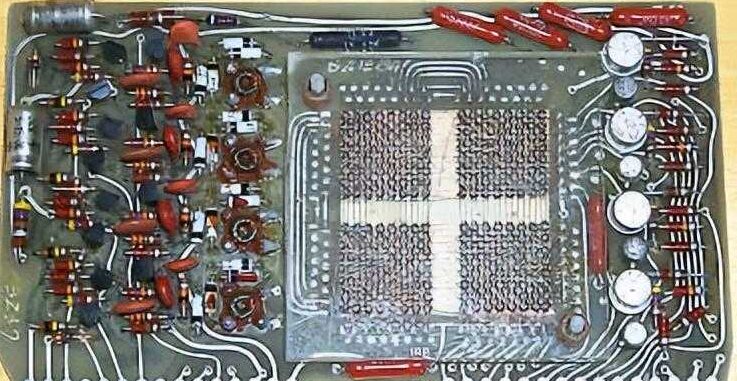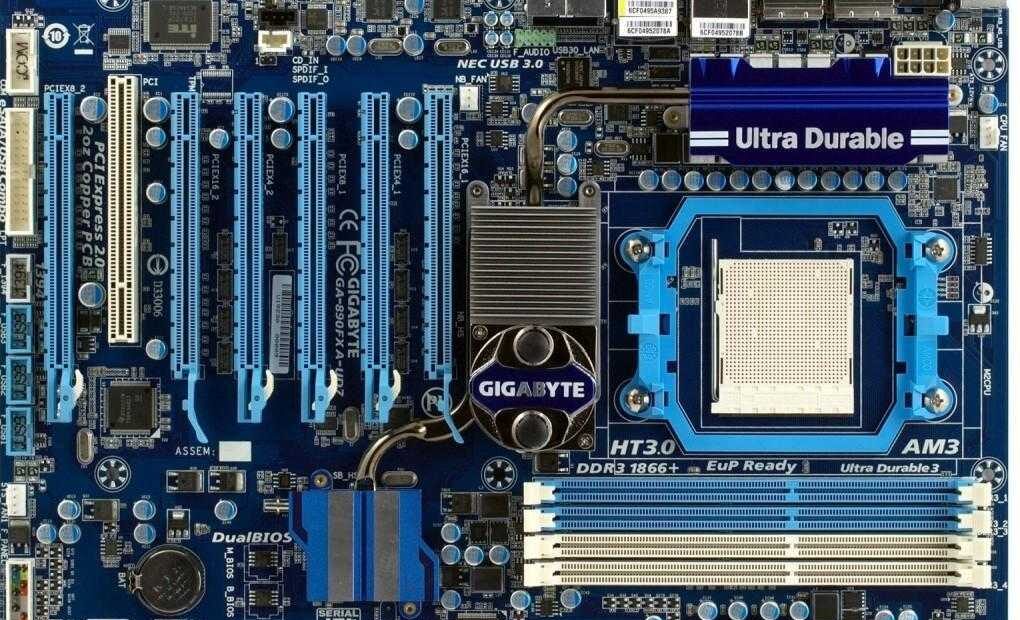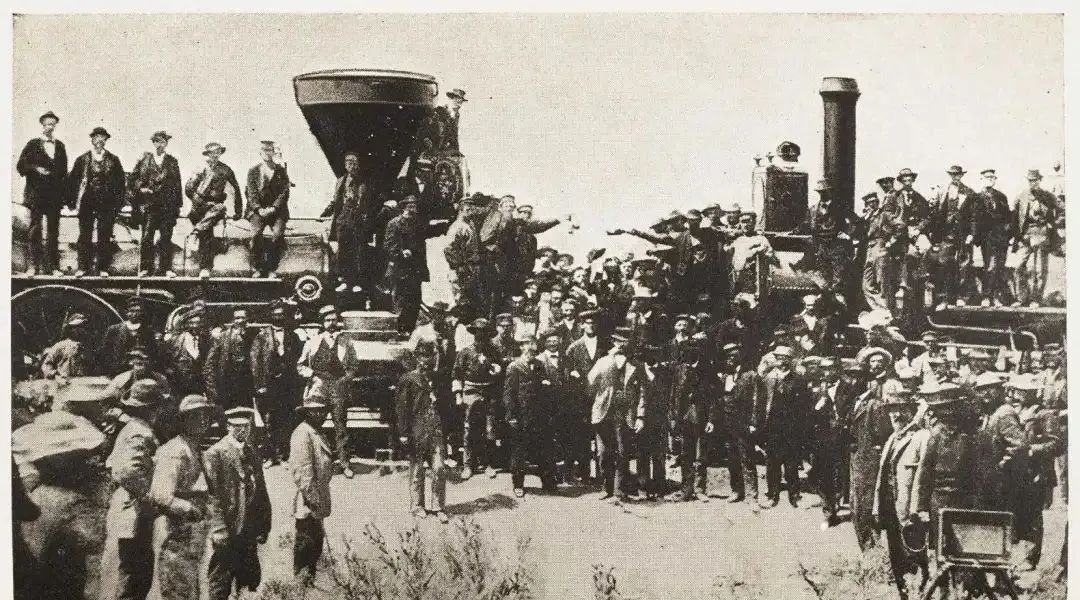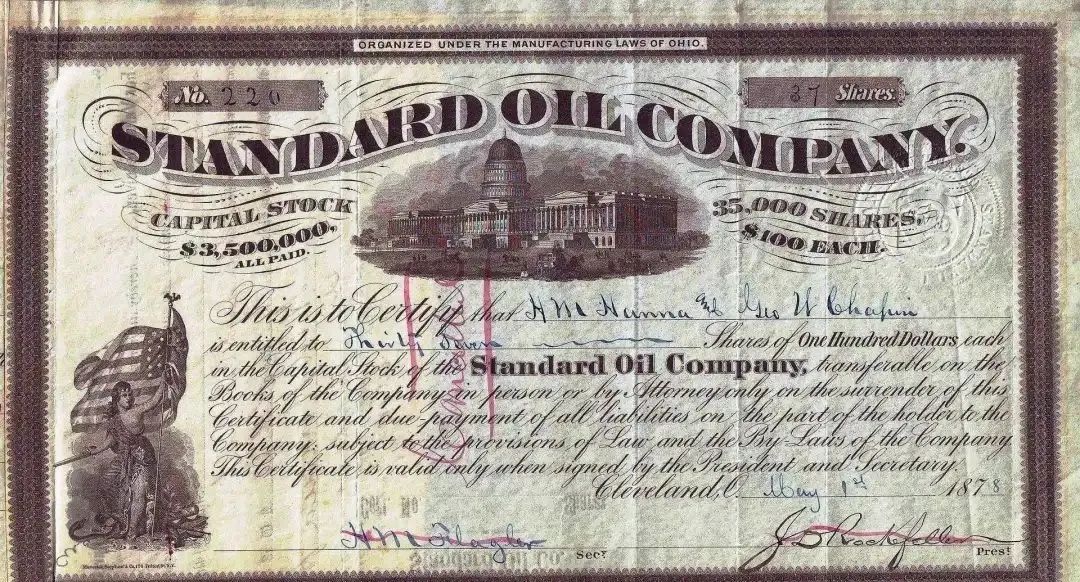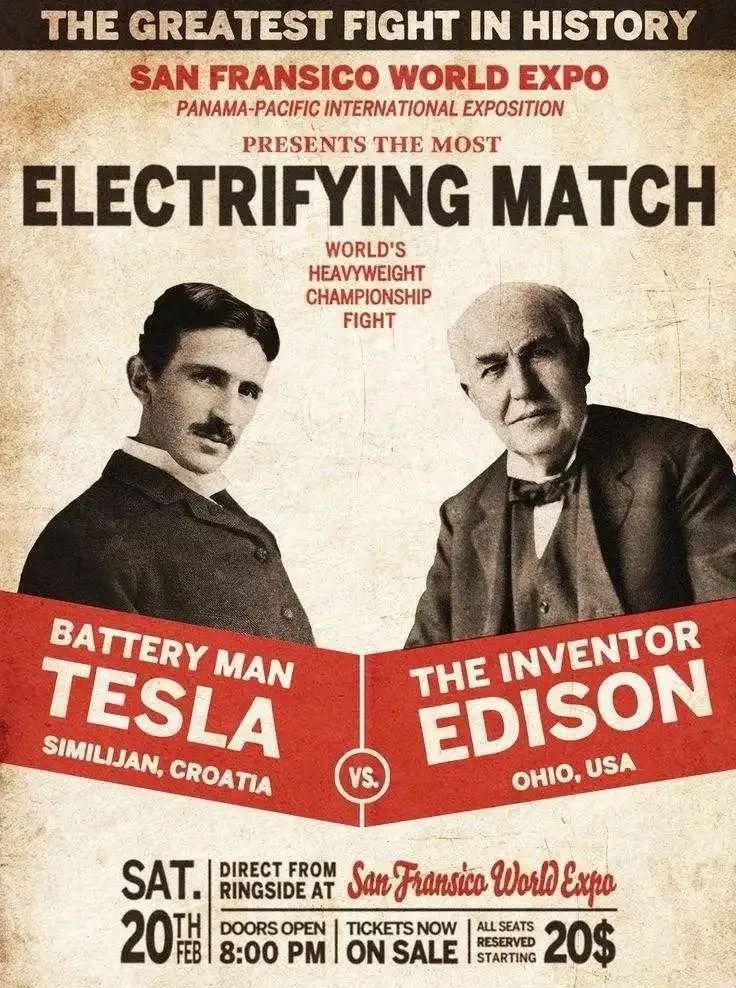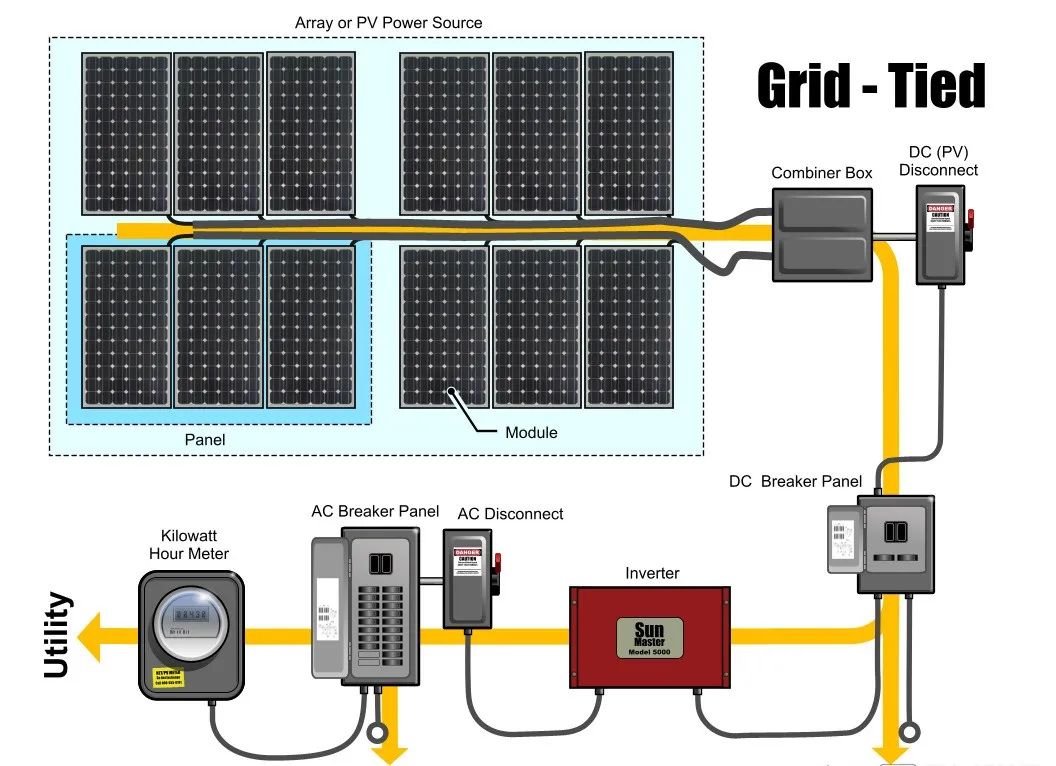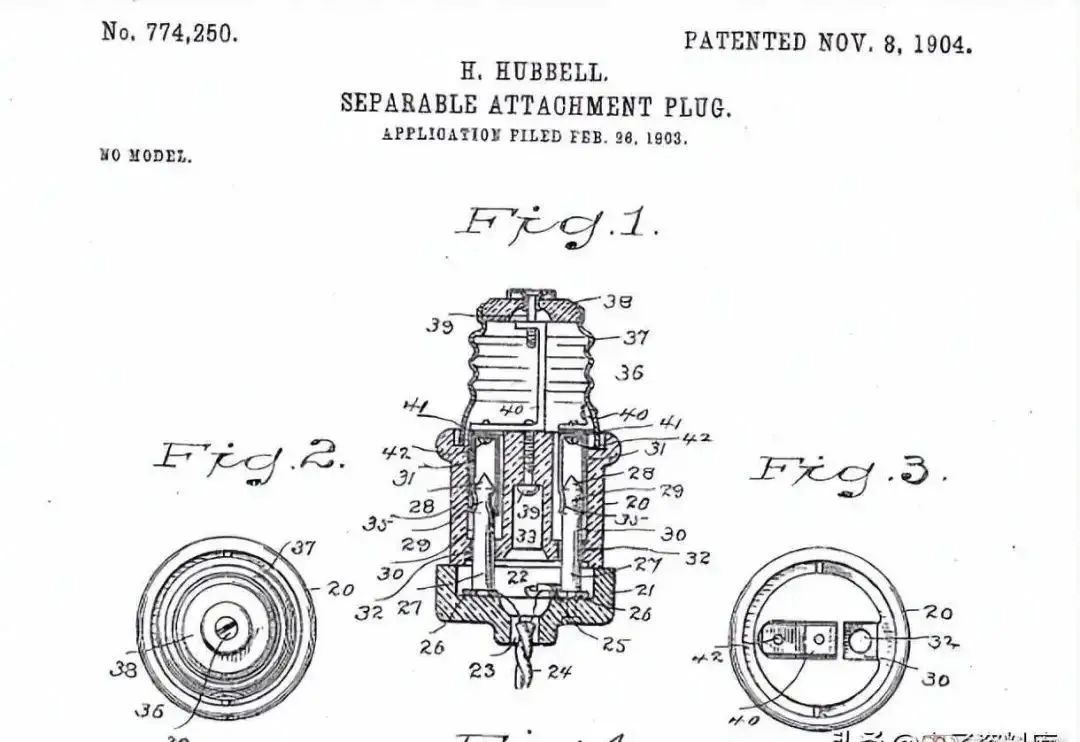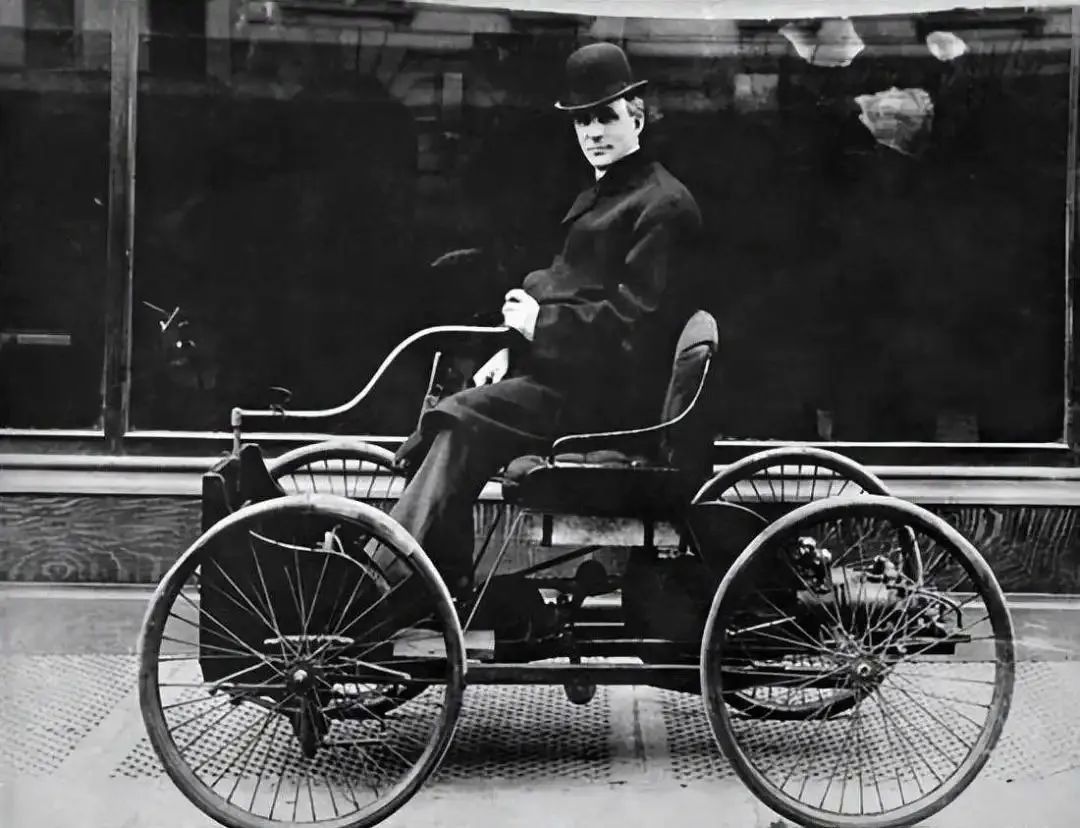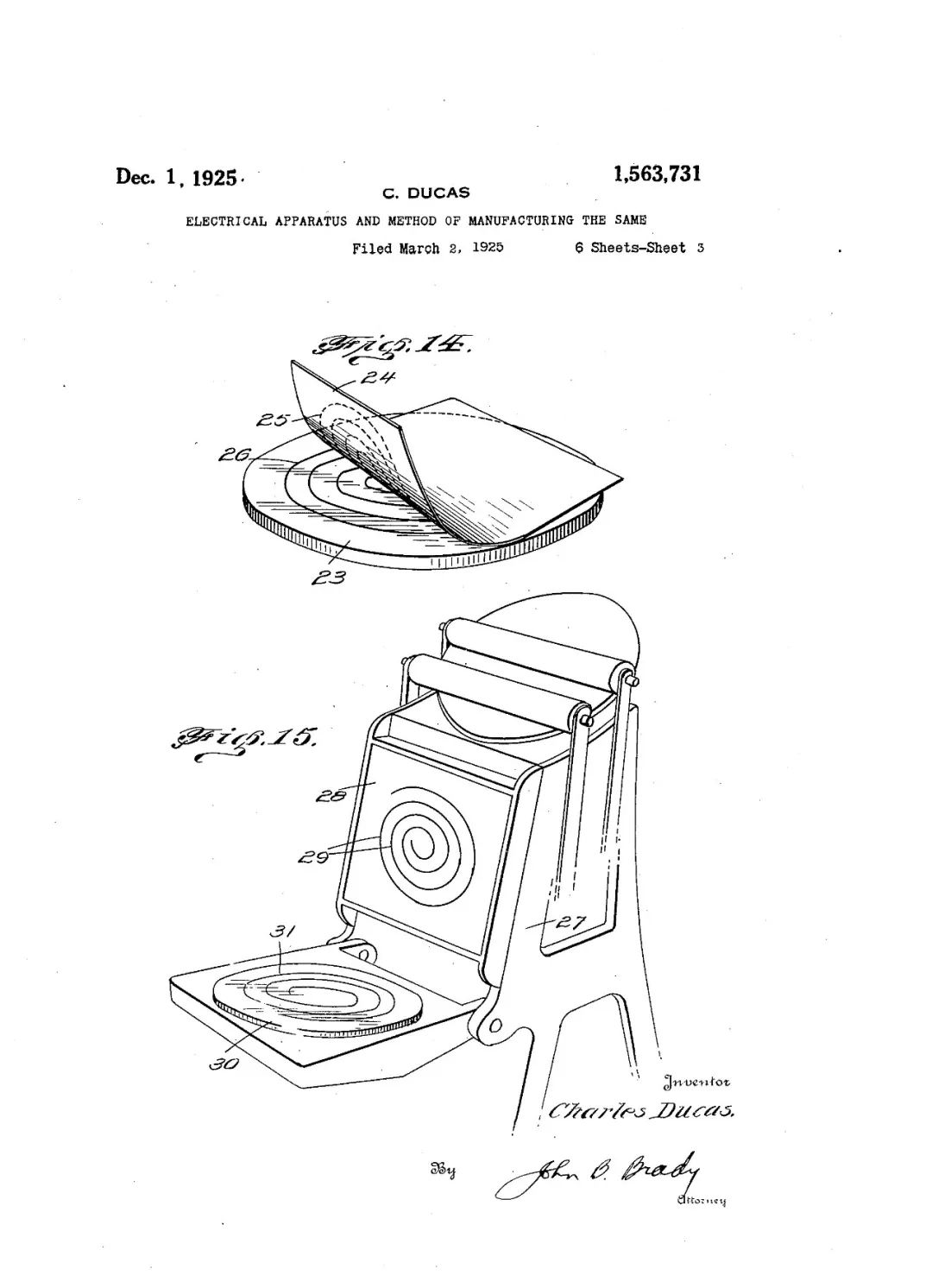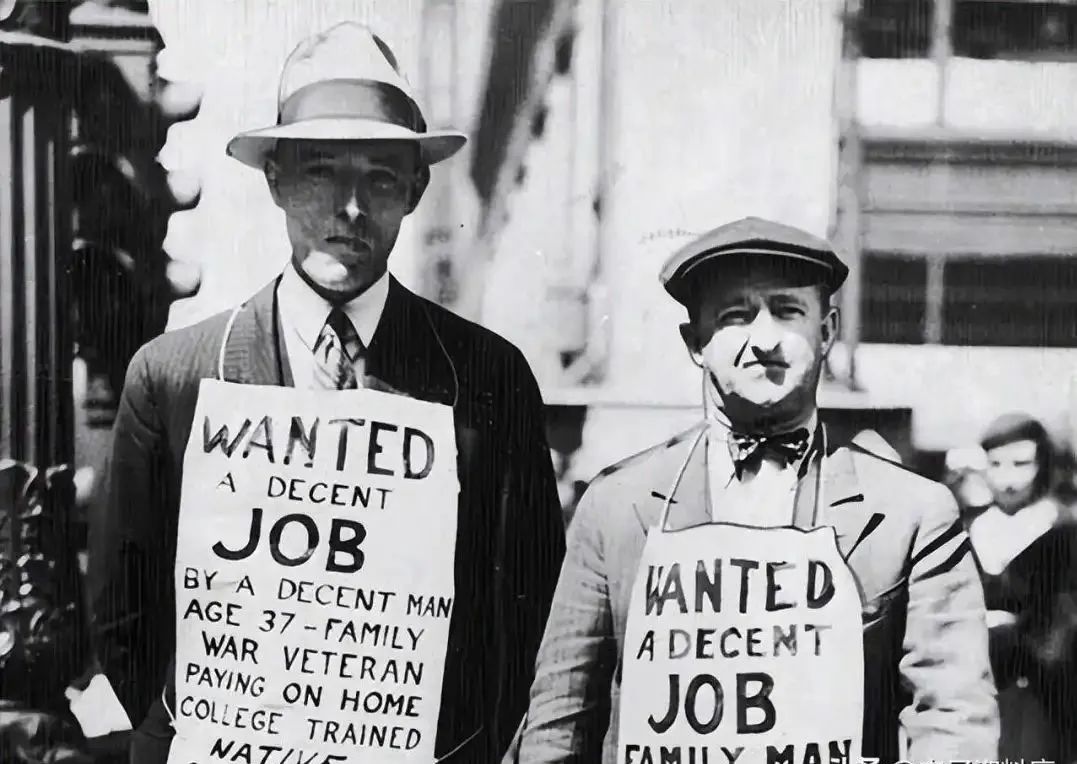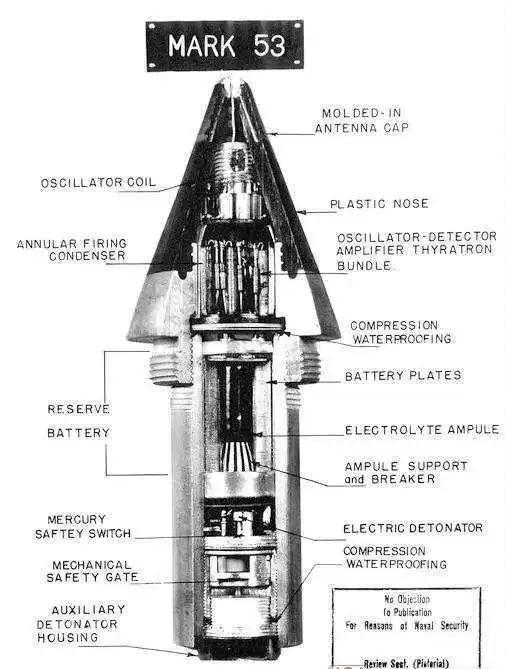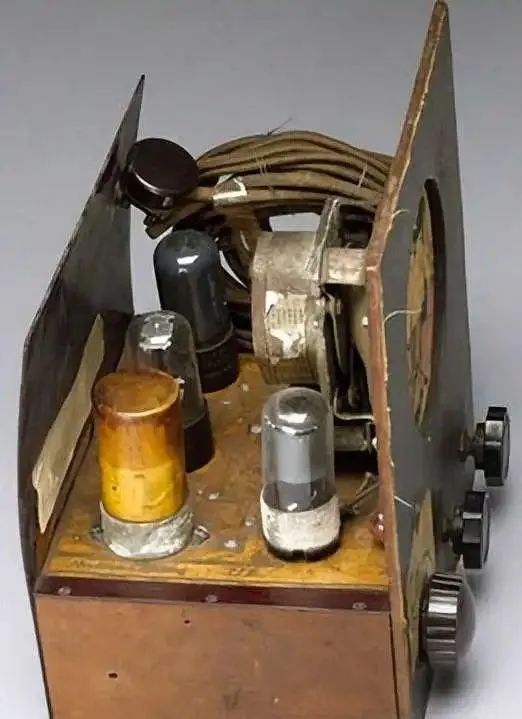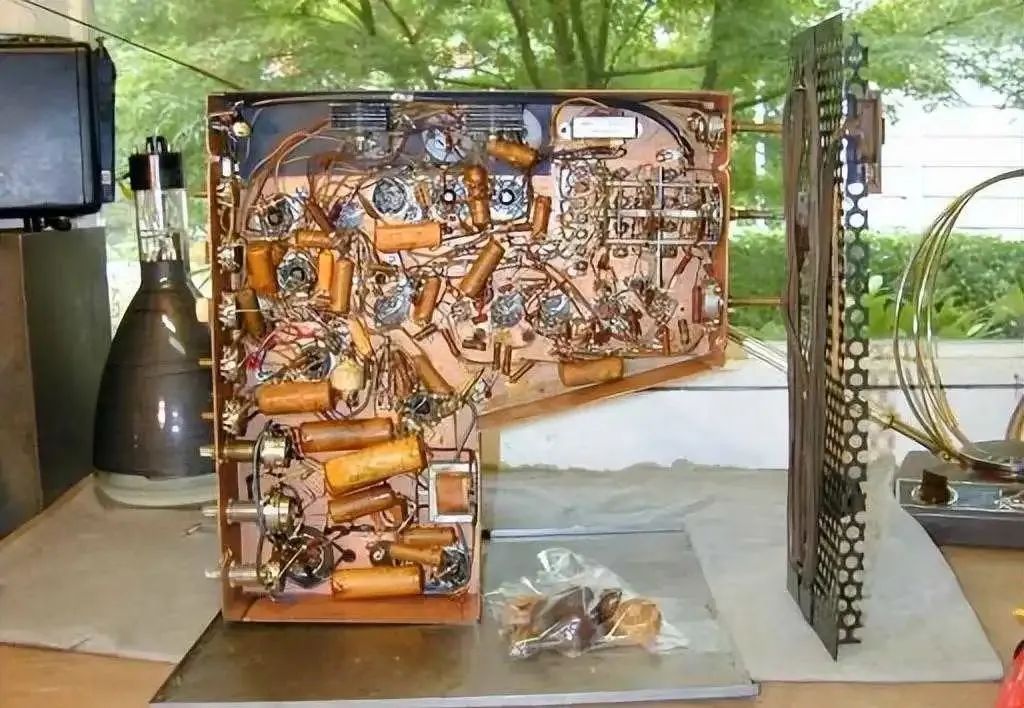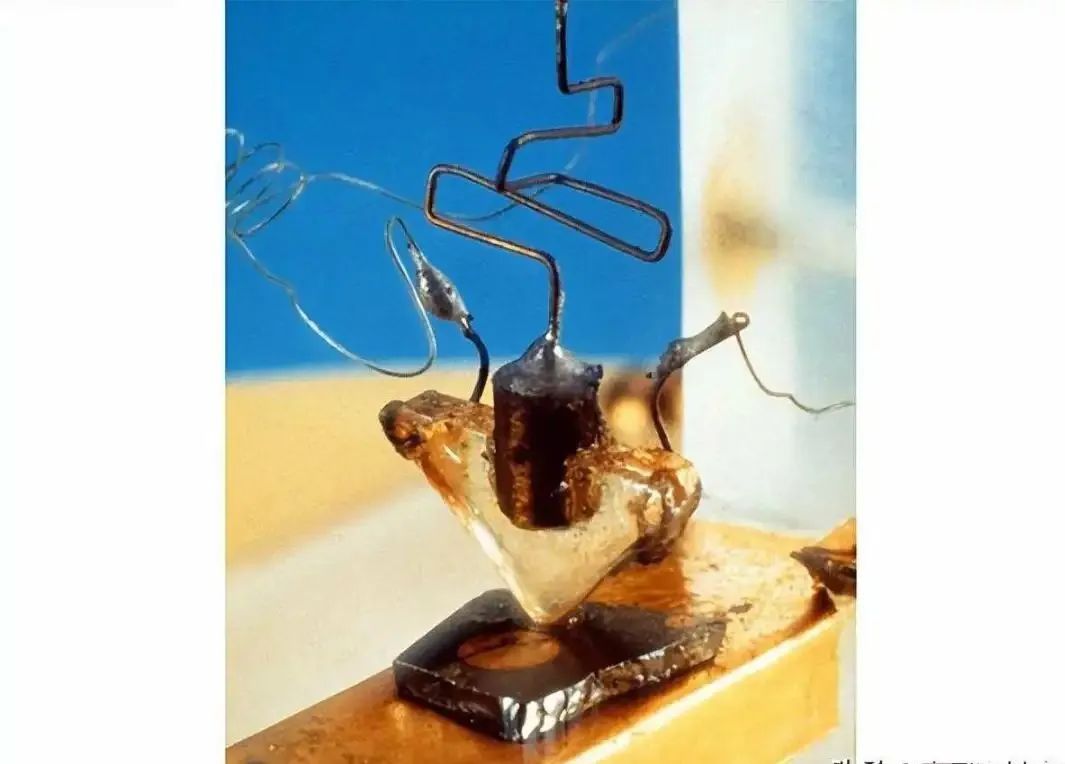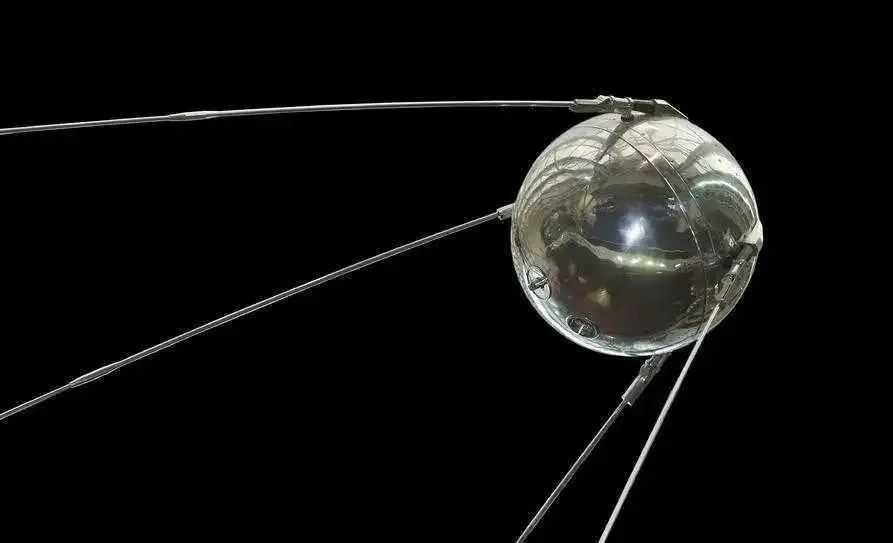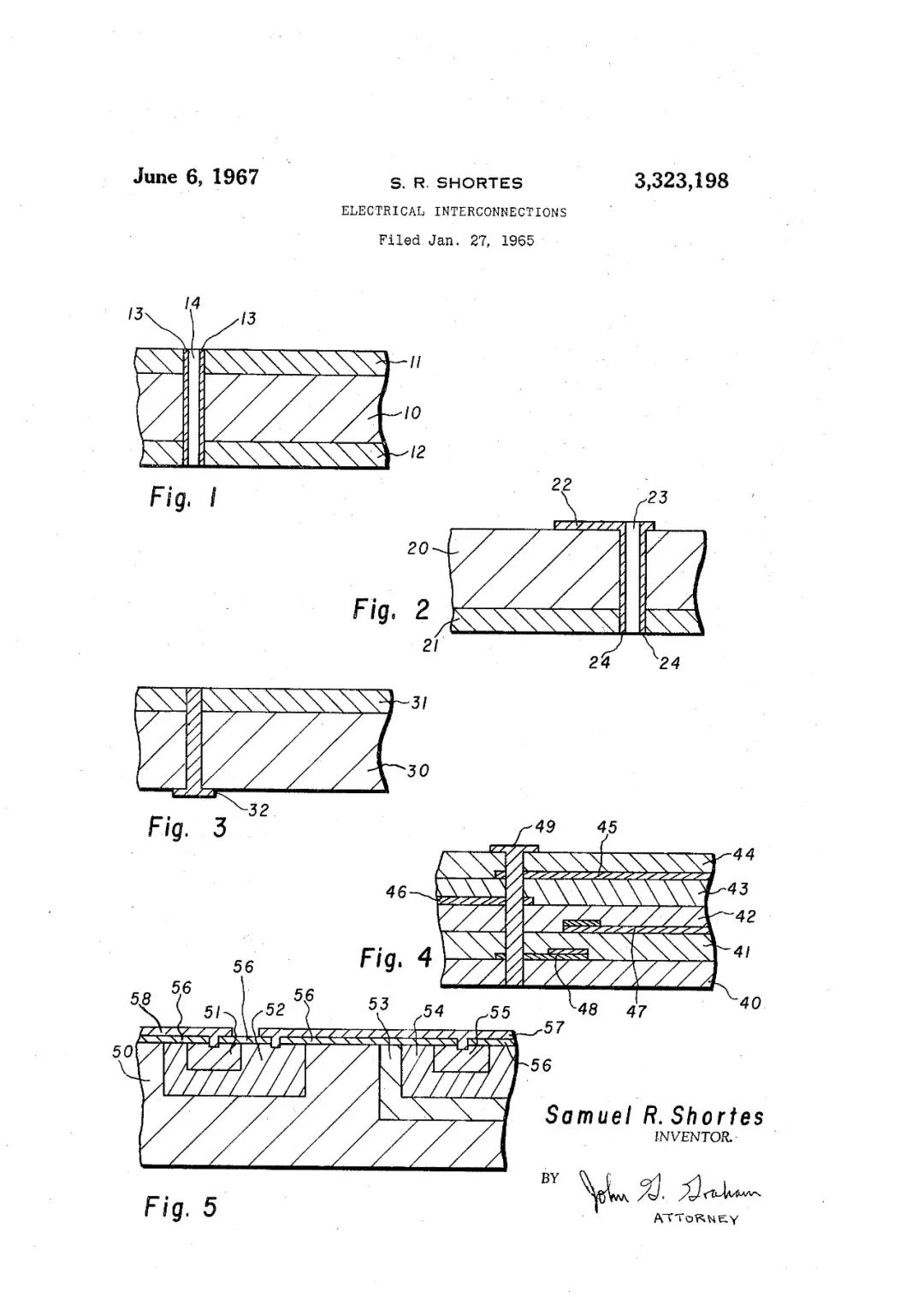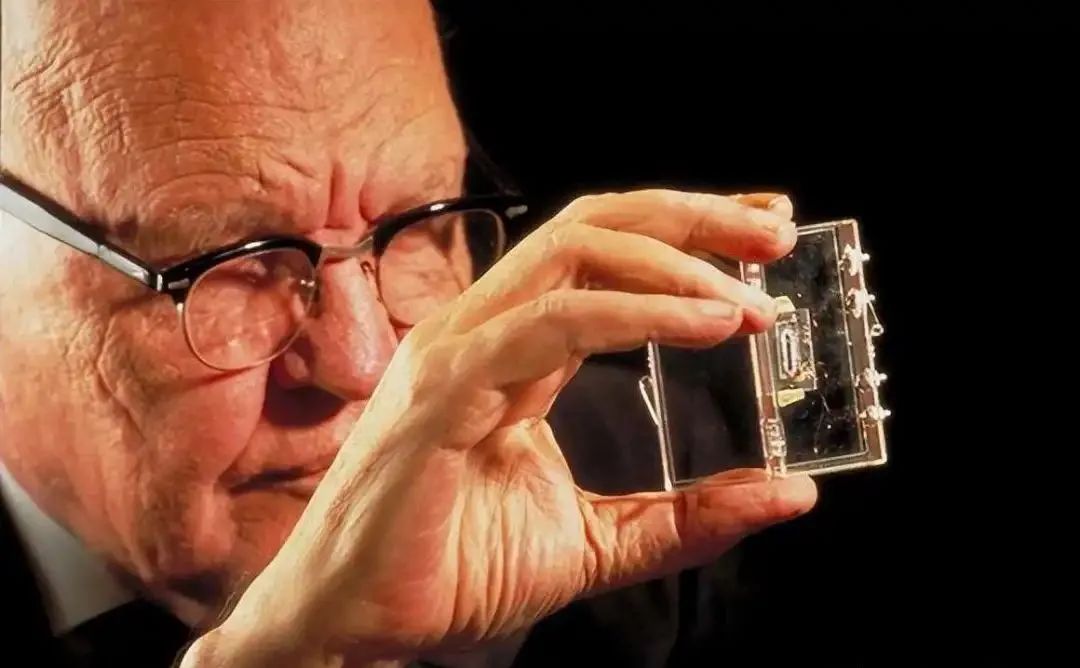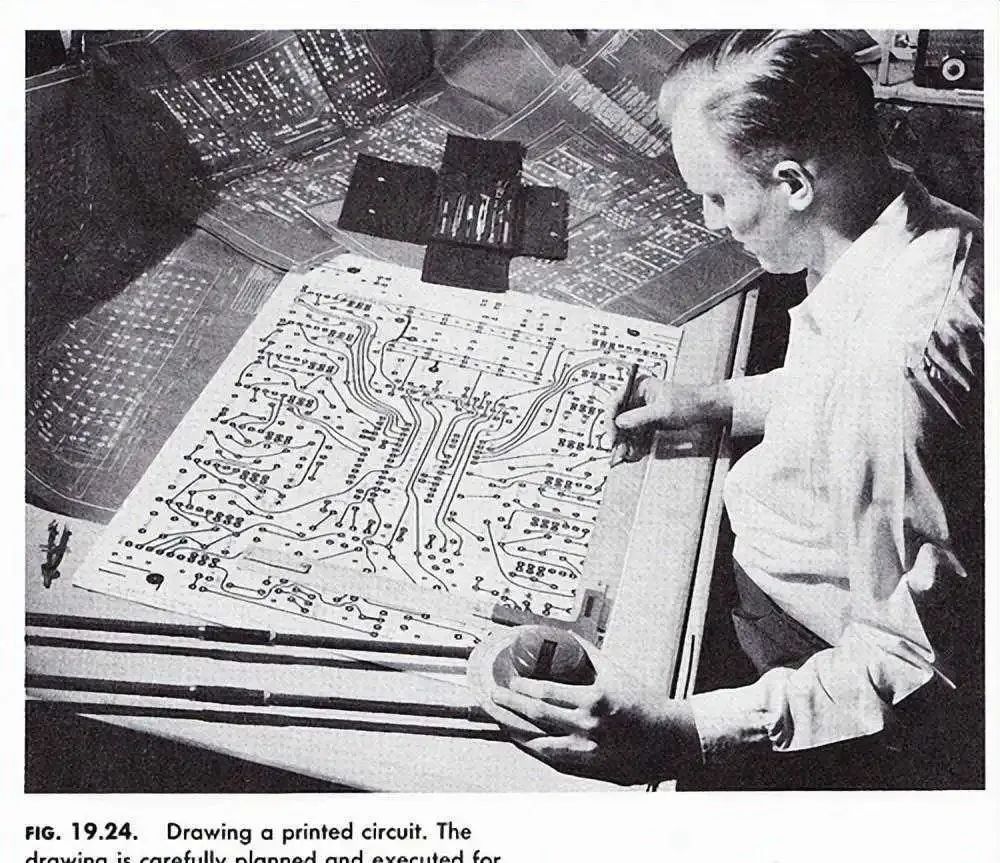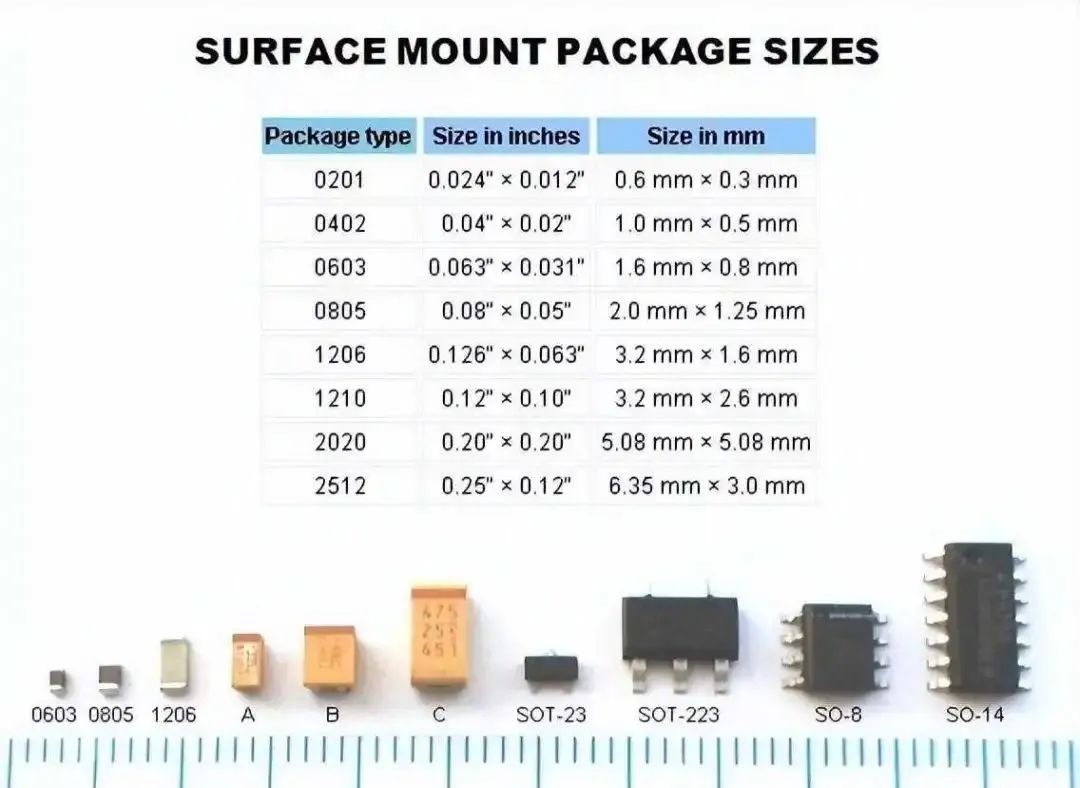Like many other great inventions in history, the printed circuit board (PCB) as we know it today is built on the foundation of historical advancements. In our little corner of the world, we can trace the history of PCBs back over 130 years to when the great industrial machines of the world were just beginning to operate. In this blog, we will not cover the complete history, but rather the significant moments that transformed PCBs into what they are today.
Over time, PCBs have evolved into tools for optimizing the manufacturing of electronic products. What was once easy to assemble by hand quickly gave way to microscopic components that require mechanical precision and efficiency. The two circuit boards shown below serve as examples. One is an old board made for calculators in the 1960s. The other is a typical high-density motherboard that you would see in today’s computers.
Comparison of PCBs between a 1968 calculator and today’s modern motherboard.
In calculators, we might have over 30 transistors, but on a single chip on the motherboard, you will find over a million transistors. The point is that the speed of advancements in technology and PCB design itself is impressive. Now, everything on the calculator PCB can fit into a single chip designed today. This has led to several significant trends in PCB manufacturing:
-
We are integrating more functions into advanced devices like integrated circuits (ICs) and microprocessors.
-
We are shrinking passive components like resistors and capacitors down to microscopic levels.
-
All of this has led to an increase in component density and complexity on our circuit boards.
All these advancements are primarily driven by the increased speed and functionality of our products. We want our devices to respond instantly, as even a few seconds of delay can drive us crazy. For functionality, consider video games. Back in the 1980s, you were likely playing Pac-Man in an arcade. Now we are seeing photo-realistic representations. The progress is simply astounding.
Nowadays, the visuals of video games are almost realistic.
It is clear that the development of PCBs directly responds to our expectations of devices. We need faster, cheaper, and more powerful products, and the only way to meet these demands is to miniaturize the manufacturing process and improve efficiency. When did this surge in electronics and PCBs begin? At the dawn of the Gilded Age.
The Gilded Age (1879 – 1900)
We ended the American Civil War in the 60s, and now American manufacturing is booming. During this time, we are doing everything we can, from food to clothing, furniture, and railroads. The transportation industry is making great strides, and our greatest engineers are figuring out how to get someone from the East Coast to the West Coast in 5 to 7 days instead of 5 to 7 months.
The railroads made travel from the East Coast to the West Coast take only a few days instead of months.
During this time, we also introduced electricity into homes, starting first in cities and then moving to suburbs and rural areas. Electricity is now a substitute for coal, wood, and oil. Imagine living in New York during the harsh winter trying to cook or heat with dirty coal or piles of firewood. Electricity changed all of that.
An interesting point is that Standard Oil, which monopolized the oil market, did not supply oil for gasoline. Their market was oil used for cooking, frying, and lighting. With the advent of electricity, Standard Oil needed to define a new use for oil, which would come with the introduction of automobiles.
Standard Oil issued stock in May 1878, marking the beginning of the oil monopoly.
During the Gilded Age, we saw some significant discoveries in electromagnetism. We invented the electric motor, which converts electrical energy into mechanical energy. We also saw generators, which do the opposite by converting mechanical energy into electrical energy.
This was also a time of genius inventors who still influence our electronic world today, including:
-
Thomas Edison invented the light bulb in 1879, the movie in 1889, and many other innovations.
-
Nikola Tesla invented the electric motor in 1888 and AC power in 1895.
-
Alexander Graham Bell invented the telephone in 1876.
-
George Eastman’s Kodak invented the first consumer camera in 1884.
-
Herman Hollerith invented the tabulating machine in 1890, later founding IBM.
During this intense period of innovation, one of the biggest debates was between AC and DC. Tesla’s alternating current ultimately became the ideal method for long-distance power transmission. However, interestingly, we are still dealing with the AC-DC conversion issues today.
AC may have won this battle, but DC still dominates electronic products.
Look at any electronic device you plug into the wall; you need to convert AC to DC. Or, if you look at the infrastructure needed for solar panels, they generate power in DC, which must be converted back to AC for power and then converted back to DC for our devices. You could almost say that the debate over AC-DC has never ended; there has just been a balance reached between the two opposing ideas.
There is a lot of back and forth between AC and DC in solar panels.
Note that the original idea of PCBs was not invented during the Gilded Age. However, without the manufacturing capabilities of this era and the widespread impact of electricity, PCBs would never have become what they are today.
The Progressive Era (1890 – 1920)
The Progressive Era is marked by a period of social reform, with legislation like the Sherman Antitrust Act breaking Standard Oil’s monopoly. This is also when we see the first PCB patent. In 1903, German inventor Albert Hanson applied for a UK patent for a device described as a flat foil conductor on multilayer insulating boards. Sound familiar?
Illustration of the first PCB patent obtained by Albert Hanson.
Hanson also described the concept of through-hole applications in his patent. Here he demonstrated that you could drill a hole in two layers with vertical lines to establish an electrical connection.
During this time, we began to see Edison and other business leaders pushing electric devices into everyday homes. The problem with this push was a complete lack of standardization. If you lived in New York or New Jersey and used Edison’s electrical inventions for lighting, heating, or cooking, what would happen if you used them in another city? They wouldn’t work because each town had its own socket configurations.
Edison wanted to sell people not just a light bulb but a service, which made the problem worse. Edison could provide you with electrical service monthly; then you would buy light bulbs, appliances, etc. Of course, these services were not compatible with other competing methods.
We owe it to Harvey Hubbel for finally ending this chaos. In 1915, he patented the standard wall socket plug that is still in use today. Now we don’t plug toasters or heating pads into light bulb sockets. This was a huge victory for industry standardization.
Thanks to Harvey Hubbel, we now have a standardized wall outlet for all electronic devices.
It is also worth noting that the Progressive Era marked the beginning of World War I. This conflict was purely focused on mechanical devices and trench warfare. The concept of PCBs, or even basic electronic products, had not yet been used for military applications, but would soon be.
The Roaring Twenties (1920s)
With the end of World War I, we are now in the Roaring Twenties, witnessing tremendous prosperity in the American economy. For the first time in history, more people live in cities than on farms. We also begin to see the introduction of chain stores and brands across the United States. You might have a family store in two different towns, but now we have major brands and stores going nationwide.
The greatest invention of this era was Henry Ford’s automobile and the infrastructure it required. This situation is similar to the 1990s when we had to build switches, routers, and fiber optics to establish a major infrastructure to handle the internet and our information age. The automobile was no different.
The first car from Henry Ford – the Quadricycle.
Here we see once muddy roads being paved. People needed gasoline to power their vehicles, leading to the emergence of gas stations. You also had repair shops, parts, etc. Many people’s entire lifestyle stemmed from the invention of the automobile, and it still does today.
It was also during this time that we saw the introduction of modern appliances we still rely on today, such as washing machines, vacuum cleaners, and refrigerators. This was the first time people could buy perishable goods in stores and store them to extend their shelf life.
But where were our PCBs? We still did not see them used in any appliances or cars launched during this period. However, in 1925, Charles Ducas submitted a patent describing a process of adding conductive ink to insulating materials. This would later yield the printed wiring board (PWB). This patent was the first practical application similar to a PCB, but only used as a flat coil for heating. We still did not have any actual electrical connections between circuit boards and components, but we were getting close.
PCBs were evolving, now used as heating coils by Charles Ducas.
The Great Depression (1930s)
In 1929, the stock market crashed, and all the great innovations of our era plummeted. Here we see a period where unemployment exceeded 25%, 25,000 banks failed, and widespread hardship affected the globe. This was a tragic time for humanity, paving the way for the rise of Hitler, Mussolini, Stalin, and the world conflicts that lay ahead. Until now, PCBs may have remained silent, but all that was about to change.
The Great Depression affected everyone, from banks to the average worker.
World War II (1939 – 1945)
World War II was underway, and the United States joined the fight after the Pearl Harbor attack in 1942. The interesting thing about the Pearl Harbor incident was the entire communication failure that led to the attack. The U.S. had ample evidence that a crisis was imminent, but all contact with their military base in Honolulu had failed, leaving the island caught off guard.
A battleship lost during the Pearl Harbor attack.
As a result of this failure, the U.S. Department of Defense realized they needed a more reliable means of communication. This brought electronics to the forefront as a primary means of communication, replacing Morse code.
Also during World War II, we saw the first use of PCBs in proximity fuses. These devices were used for high-speed shells that required long-range precision firing in the air or on land. Proximity fuses were initially developed by the British to counter the advance of Hitler’s forces, later shared with the Americans for design and manufacturing improvements.
One of the earliest military applications of PCBs – proximity fuses.
During this time, we also had Austrian Paul Eisler, living in England, file a patent for copper foil on a non-conductive glass substrate. Sound familiar? This is the concept we still use today for manufacturing PCBs with insulated layers and copper on top/bottom. Eisler created a radio using his PCB in 1943, taking this idea further and paving the way for future military applications.
Radio made using the first printed circuit board (PCB) by Paul Eisler.
The Baby Boom Generation (1940s)
As World War II drew to a close, we saw our soldiers returning home, starting families, and having a bunch of kids. Enter the Baby Boom Generation. It was in the post-war era that we saw significant improvements in existing appliances like vacuum cleaners, washing machines, televisions, and radios. Now that the Great Depression was over, many consumers could finally afford these devices at home.
We still did not see consumer-grade PCBs. Where was Paul Eisler’s work? Look at the old television below, and you will see all the components but no underlying PCB base.
An old Motorola television from 1948, without a PCB.
Despite the absence of PCBs, we did see the arrival of transistors at Bell Labs in 1947. It wasn’t until 1953, six years later, that this device was finally used in products. But why did it take so long? In those days, information was disseminated through journals, conferences, etc. Before the information age, the spread of information just took time.
The first transistor, born in 1947 at Bell Labs.
The Cold War Era (1947 – 1991)
The arrival of the Cold War marked a period of tension between the U.S. and the Soviet Union. Due to the differences between capitalism and communism, these two giants were almost at war with each other, putting the world at the threat of nuclear annihilation.
To maintain an edge in this arms race, both sides had to strengthen their communication capabilities to understand what the enemy was doing. Here we see PCBs being fully utilized. In 1956, the U.S. Army published a patent for the “circuit assembly process.” Now manufacturers had a method to fix electronic products and establish connections between components with copper traces.
As PCBs began to take off in manufacturing, we found ourselves in the world’s first space race. The Russians achieved some amazing milestones during this time, including:
-
Launching the first artificial satellite, Sputnik, in 1957
-
Launching the first spacecraft, Luna 2, to the moon in 1959
-
Sending the first astronaut, Yuri Gagarin, to orbit the Earth in 1961
The first artificial satellite, Sputnik, launched by Russia in 1957.
Where was America during all this? Mostly lagging behind, often taking a year or two to develop the same technology. In response to this gap, we saw the U.S. space budget grow fivefold in 1960. We also had the famous speech by President Kennedy in 1962, part of which is worth quoting:
“We choose to go to the moon! We choose to go to the moon in this decade and do the other things, not because they are easy, but because they are hard; because that goal will serve to organize and measure the best of our energies and skills, because that challenge is one we are willing to accept, one we are unwilling to postpone, and one we intend to win.” — President John F. Kennedy, September 12, 1962
All of this led to a historic milestone. On July 20, 1969, the first human stepped on the moon.
The first human to step on the moon, a historic moment for humanity.
Back to PCBs, in 1963, we had Hazeltyne Corporation apply for the first patent for plated through-hole technology. This would allow components to be tightly packed on PCBs without worrying about cross-connections. We also saw the introduction of surface mount technology (SMT) developed by IBM. These dense components were first practically applied in the Saturn rocket boosters.
The first patent for plated through-hole PCB technology in 1967.
The Dawn of Microprocessors (1970s)
The 1970s brought us the first microprocessor in the form of integrated circuits (ICs). This was initially developed by Jack Kilby of Texas Instruments in 1958. Kilby was a newcomer to TI, so his innovative ideas for ICs were largely kept secret. However, when TI’s senior engineers were sent away for a week-long conference, Kilby stayed behind and ran with the ideas in his mind. Here he developed the first IC in the TI laboratory, and the returning engineers loved it.
Jack Kilby holding the first integrated circuit.
In the 1970s, we saw ICs used in electronic product manufacturing for the first time. By this time, if you weren’t using PCBs for connections, you were in big trouble.
The Dawn of the Digital Age (1980s)
The digital age brought about a tremendous change in our consumer media, introducing personal devices like CDs, VHS, cameras, game consoles, and Walkmans.
In 1980, the Atari video game console made children’s dreams come true.
It is worth noting that PCBs were still hand-drawn using light boards and templates, but then computers and EDA emerged. Here we saw EDA software like Protel and EAGLE revolutionizing the way we design and manufacture electronic products. Now, we could save designs as Gerber text files instead of photos of the PCB, which coordinates could be input into manufacturing machinery to produce PCBs.
Before EDA, PCBs were drawn with tape and polyester film.
In the 1990s, with the introduction of BGA, we saw the use of silicon unfold completely. Now we could install more gates on a single chip and began embedding memory and system-on-chip (SoC) together. This was also a period of high miniaturization of electronic products. We did not see any new features added to PCBs, but the entire design process began to change and evolve, shifting towards ICs.
Designers now had to implement design-for-test (DFT) strategies in their layouts. Popping a component and adding a blue line was not easy. Engineers had to design their layouts from the perspective of future rework. Could all the components be easily removed based on how they were placed? This was a huge concern.
This was also a time when smaller component packages like 0402 made it almost impossible to manually solder circuit boards. Designers now lived in their EDA software, while manufacturers were responsible for physical production and assembly.
Surface mount components from large to small.
The Hybrid Age (2000s and Beyond)
Entering today’s age of electronics and PCB design; we call it the Hybrid Age. In the past, we had multiple devices to meet various needs. You needed a calculator; you bought a calculator. You wanted to play video games; you bought a video game console. Now you can buy a smartphone and get 30 different levels of built-in functionality. This may seem very obvious, but when you really see all the things our smartphones can do, it is quite shocking:
We are in an era of device integration, but what will happen next? PCBs have been established, and we have processes and procedures for almost everything. High-speed applications are becoming the norm. We also see that only 25% of PCB designers are under the age of 45, while 75% are preparing for retirement. The industry seems to be in a crisis period.
Will the future of PCB design be robotic? Perhaps in wearable devices with flexible circuits? Or we might see protons replacing electrons with photonics. As for the physical PCBs we understand, the future may change even that. There may be no physical medium needed to achieve connections between components, but rather the potential for wave technologies. This would allow components to wirelessly send signals without the need for copper.
What Does the Future Hold?
No one really knows the direction of PCB design in the future, nor the direction of electronic products as a whole. Nearly 130 years have passed since our manufacturing muscle began to operate. Since then, with the introduction of automobiles, appliances, computers, smartphones, and other major products, the world has changed forever. The days when our basic livelihoods and survival depended on coal, wood, or oil are long gone. Now we have electronic products that meet our daily needs.
But what will the future hold? That is a big unknown. It is well known that every invention before us stands on the shoulders of its predecessors. Our ancestors brought PCB design to where it is today, and now we need innovation and a complete transformation in how we design and interact with technology. The future can be anything. The future depends on you.
Disclaimer: This article is reproduced solely for the purpose of disseminating information and does not represent the views of this website or confirm the authenticity of its content; if other media, websites, or individuals reproduce and use this website, they must retain the “source” noted by this website and bear legal responsibility for copyright and other matters.
Source | High-Speed RF Baihuatan
Editor | Lu Sidi
Reviewed by | Chen Yunlai
-End-
Click the link below to view historical articles
A good paper is made through revision!
CNKI’s annual price increase is suspected of monopoly; how should academia and business balance?
Contents of Modern Electronic Technology Issue 12, 2019
In 2017, which universities published the most SCI papers and authorized patents?
Modern Electronic Technology selected in Overview of Core Chinese Journals
Academician of the Chinese Academy of Sciences: The dominance of SCI-led papers stifles scientific creativity
How to write a “Nature” article overnight, listen to what the academicians have to say!
